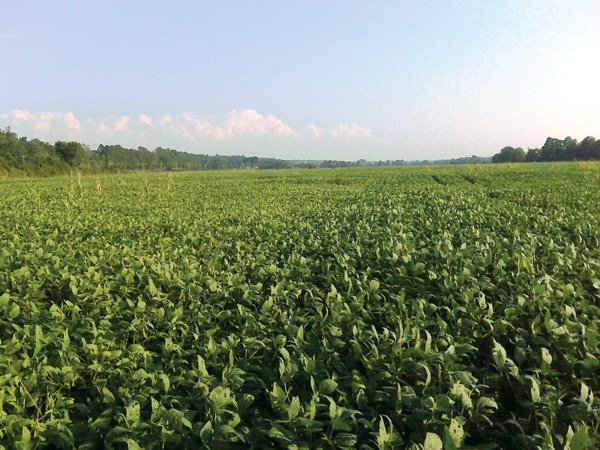
Compatible biofungicide
@font-face { font-family: "Cambria";}p.MsoNormal, li.MsoNormal, div.MsoNormal { margin: 0in 0in 0.0001pt; font-size: 11pt; font-family: "Times New Roman"; }div.Section1 { page: Section1; }Ballad Plus biofungicide, from AgraQuest, is a biological pest control product.It can be used in tankmix combinations. @font-face { font-family: "Cambria";}p.MsoNormal, li.MsoNormal, div.MsoNormal { margin: 0in 0in 0.0001pt; font-size: 11pt; font-family: "Times New Roman"; }div.Section1 { page: Section1; }The company says that Ballad Plus controls or suppresses rust, frogeye leaf spot, brown leaf spot in soybeans.
October 15, 2010

A challenge with developing biological pest controls is to make them compatible with how growers already manage their crops. AgraQuest has tackled that challenge with the introduction of a new biofungicide for soybeans.
“We’ve formulated our biologicals so that growers can apply them the same way they would with conventional crop protection products,” says Sarah Reiter, global marketing director, AgraQuest, Davis, CA. AgraQuest is a biotechnology company that discovers, develops and markets biological pest controls for agricultural, home and industrial markets.
The company’s Ballad Plus biofungicide, for example, can be used in tankmix combinations at ½ to 1 qt./acre with strobilurin or triazole fungicides to provide broader control against several soybean diseases. The photo above shows untreated soybeans (left) alongside soybeans that received a combination treatment of Ballad Plus (1 qt./acre) and strobilurin (3 oz./acre). Ballad Plus also may be used alone at a rate of ½ to 1 qt./acre using a conventional sprayer, irrigation or aerial application system.
The biofungicide controls or suppresses rust, frogeye leaf spot, brown leaf spot and anthracnose. It can be used in both conventional and organic production.
AgraQuest recommends that Ballad Plus be applied at the R1 to R3 stages of soybean development. According to AgraQuest, grower field tests over a three-year period showed that a combination of Ballad Plus (at 1 pint/acre) and strobilurin (at 3 to 6 oz./acre) improved soybean yields by 4.6 bu./acre on average over untreated soybeans. In field tests where the biofungicide was applied alone (at the R3 stage) at ½ to 1 qt., it averaged 2.7 bu./acre over untreated soybeans, the company says.
The biofungicide can be stored in the same manner as conventional crop protection products, says Cesar Lamonega, commercial vice president for AgraQuest’s Americas and Asia Regions. Ballad Plus has a two-year shelf life.
AgraQuest has been working with companies such as BASF, Bayer and Syngenta on incorporating biopesticide controls into integrated pest management (IPM) programs, Lamonega says. “IPM is one of our strengths,” he says. Ballad Plus, for example, features a different mode of action, which helps lower the possibility of crops developing resistance to fungicides. In addition, the biofungicide has no residue restrictions for export.
The amino acids in Bacillus pumilus, from which Ballad Plus is made, compete for the enzyme that builds fungal cell walls. Therefore, the biofungicide prevents the development of fungal cells and protects the soybeans.
About the Author(s)
You May Also Like



